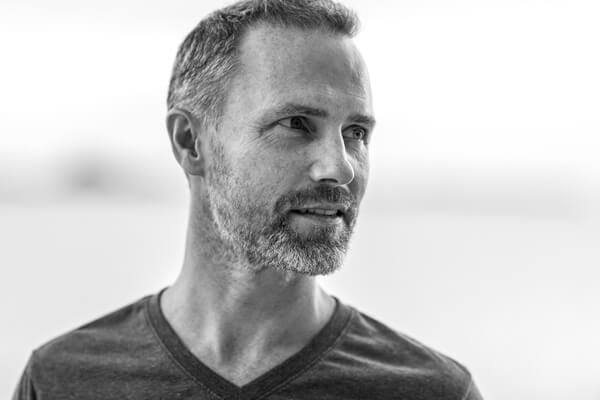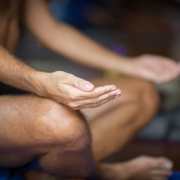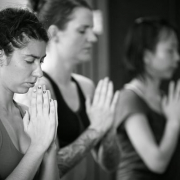 https://samahitaretreat.com/wp-content/uploads/2018/06/gill-blog-1.jpg
382
800
Gill Breetzke
http://samahitaretreat.com/wp-content/uploads/2024/01/samahita-logo-v2.svg
Gill Breetzke2018-06-17 08:10:112022-11-28 10:36:474 “Agreements” for Joyful Relationships
https://samahitaretreat.com/wp-content/uploads/2018/06/gill-blog-1.jpg
382
800
Gill Breetzke
http://samahitaretreat.com/wp-content/uploads/2024/01/samahita-logo-v2.svg
Gill Breetzke2018-06-17 08:10:112022-11-28 10:36:474 “Agreements” for Joyful RelationshipsBrahmacharya

One of the more discussed and misunderstood topics in yoga, the common belief is that it is celibacy, a complete abstinence from sexual activity. But this is only part of the picture.
“Brahma” is the Ultimate Reality, the Creator. “Char” is to move. Literally then the move to the ultimate reality or more practically put, ways or methodology to be used for self realization. It comes up as one of the five Yamas presented in classical yoga by Patanjali. Other texts that deal with the Yamas also present it, most notably the Vasishtha Samhita, listing it as one of ten Yamas.
Patanjali in the Yoga Sutras does not give us a definition of Brahmacharya, he only states for us the effect of it.
“Brahma charya pratishthayam virya labhaha” (PYS II.38)
When brahmacharya becomes stable then the yogin gains great energy and power.
We need to look at this further. The yogic process is one of channeling and managing energy within, where as in average daily life this life energy, or prana, is wasted, drained out the senses. The thought of sex and the force of the sex drive is a huge component in this. So if we look at it from a practical, modern day point of view we can understand Brahmacharya as harnessing the energy or power of our senses and directing that instead to greater personal understanding.
In a very traditional sense Brahmacharya was a description for the early part of life, on average up to about the age of 25, before marriage, time focused on studies. Here all energy was devoted to learning of which much of that was gaining the tools to practice the ways to self-realisation. It was typically a time of sexual abstinence. Later one entered family life and naturally sex was part of it. This was the system and culture around the time of Patanjali and Vasishtha.
Today our student life is full of self-enjoyment and sexual activity is begun very early. There is not much check on the senses and impatient and distracted states of mind are the norm almost. To work on oneself requires some discipline and self-control. To harness the power of the senses requires this same discipline and control. One of the biggest drainers of energy is the sex impulse. Very often it plays a large distraction just in the mind even though no physical engagement has occurred. It is very difficult for that individual to find peace when the mind is continually distracted and desirous of sexual activity. It draws the energy down and keeps it low. The flip side is some people totally suppress the sexual urge which leads to an unnatural state and block. Neither are desirous.
So today we can benefit from Vasishtha’s further explanation of Brahmacharya. He offers three explanations (VS I.43-45). First is an absolute abandoning of sexual indulgence, on mental, verbal and physical. But second he offers for householders that Brahmacharya includes sex with their partner. Thirdly he offers that serving the Guru or Master regularly is considered also to be Brahmacharya.
From all of this we can see that Brahmacharya is a level of self discipline and proper behaviour, especially in terms of sexual activity, and quite obviously requires a harnessing of sensual activity. At certain times or stages in life it is natural that sex would be abandoned but at other times it is necessary and appropriate. For if we all abandoned sex the human race would fizzle out in one generation.
Sex is a need, both for society and for our personal well-being. Abstinence should never be forced. It should come naturally. One might find at a point in life that time in sex is complete. This aspect of Brahmacharya has arisen from within.
What is clear is that nowhere in Yoga does it suggest a liberal use of sex and random partners to satisfy one’s craving and appetite. It comes up in the Yamas after Ahimsa (don’t hurt another), Satya (be truthful) and Asteya (no greed, don’t take what is not your’s). Typically loose sexual conduct ends up with one person being hurt and very often lied to. People feel let down and something taken from them. So to follow these three Yamas is key in behaviour and relations with another. Then the sexual activity becomes shared and understood.
Enjoy sex when engaged in it. Share it. Give attention and care. This is love in itself. The self control as meant by Brahmacharya brings a healthy relationship into your life and, being so channeled, gives great strength and energy, as Patanjali has explained. If complete celibacy arises then it is as a natural result of the focus and practices engaged in over the years of yoga practice.
Dr. Paul Dallaghan’s expertise with breathwork, body and meditative practices comes from three sources: (1) three decades of daily dedicated practice and teaching these techniques; (2) uniquely acknowledged in the Yoga tradition by the title of “Master Yogi-Prānācharya (expert in breath)”, following an immersion in the original culture through one-on-one direct training in practice and study of ancient texts; (3) a PhD in doctoral scientific research at a leading US university (Emory) covering both the tradition and science of yoga and breath practices in terms of stress, health and aging. As a result, Paul occupies a unique space to impart genuine teaching and science on the breath, body, and meditative practices, seen as a Teacher-of-teachers and identified to carry on the tradition of Pranayama. His sincere and ongoing role is to teach, write and research, to help put out experienced and authentic information on these areas of how we live, breathe and be, to help people improve their mental and physical health, and live more fulfilling lives.
For more on his background see his bio
More from the Samahita Blog







